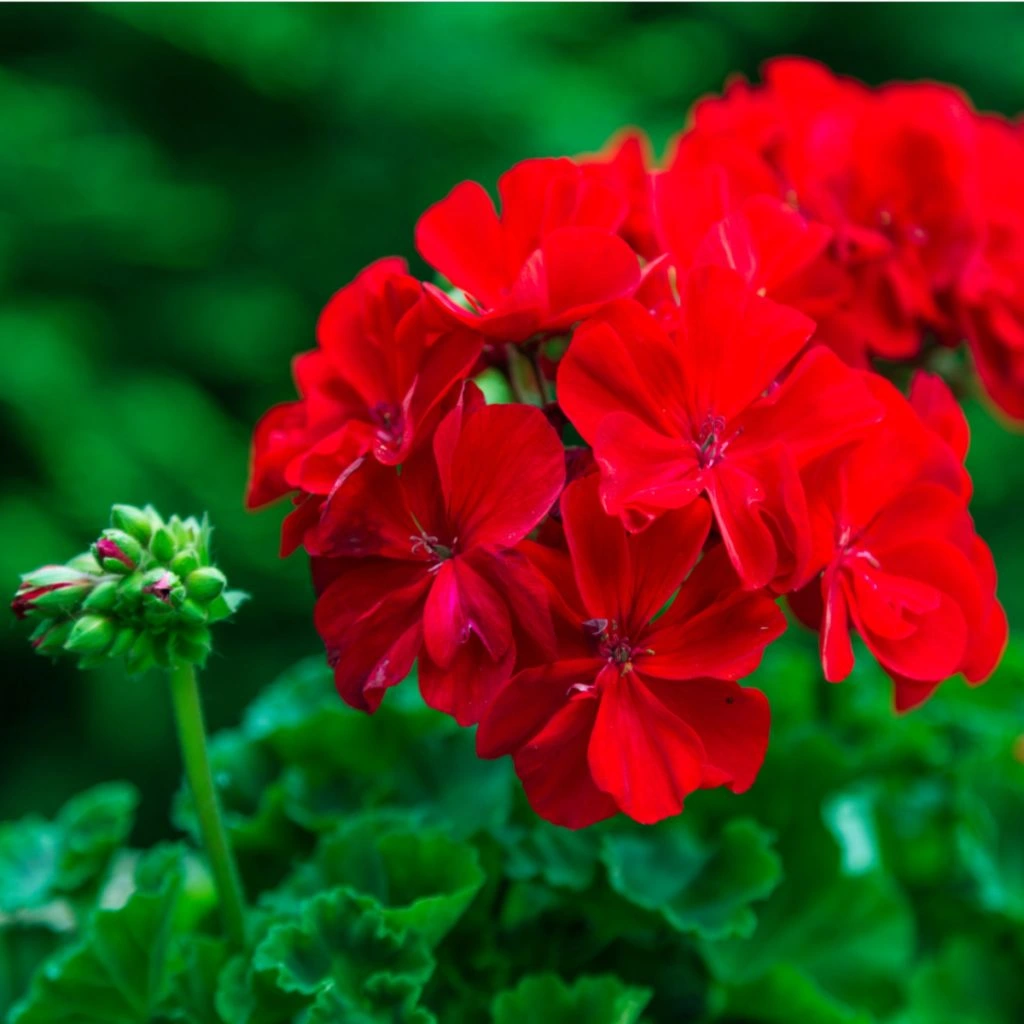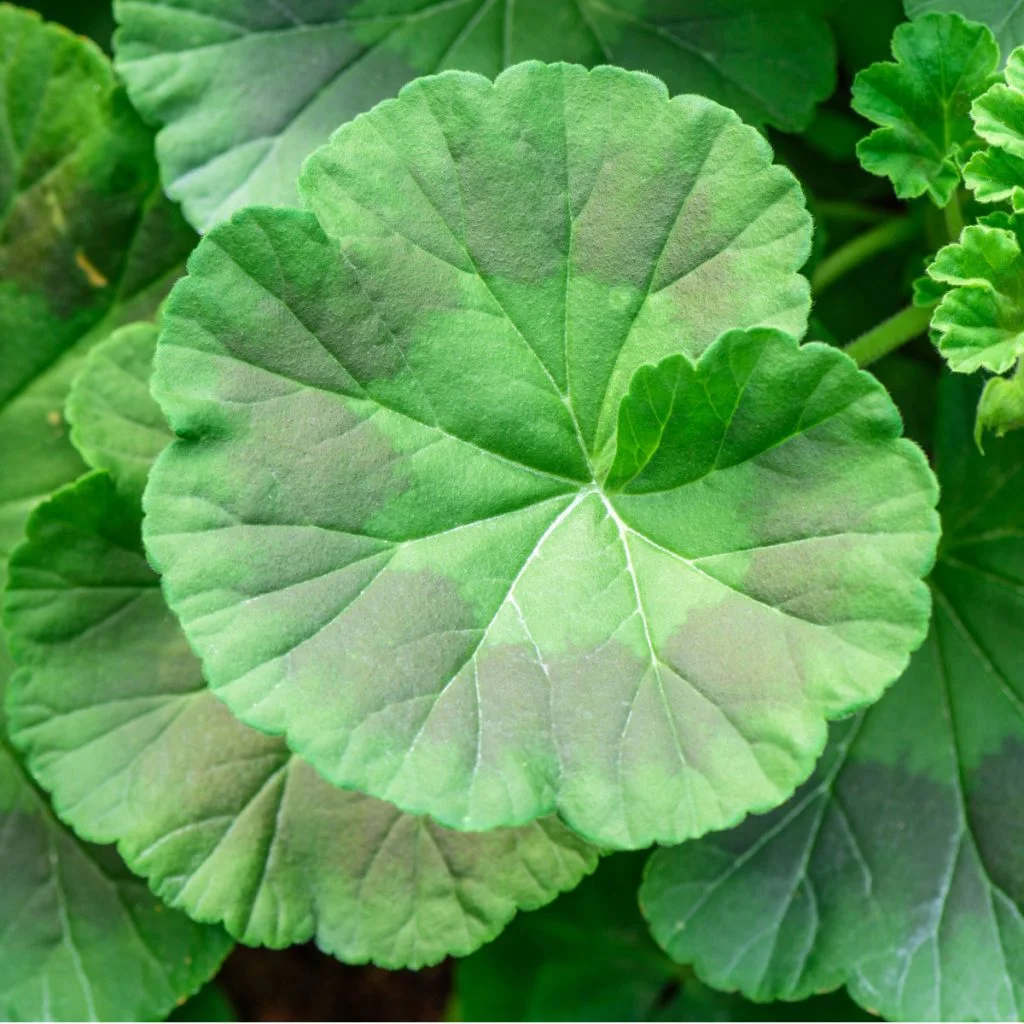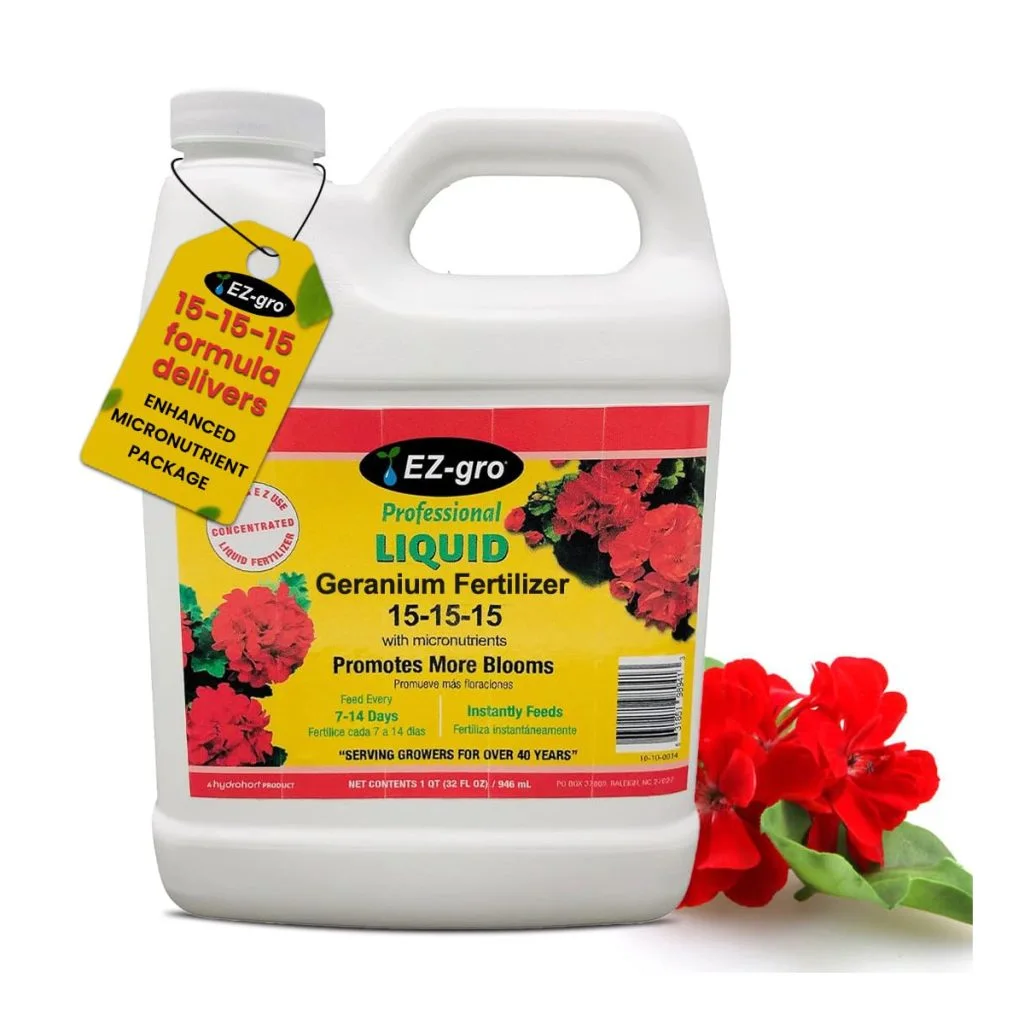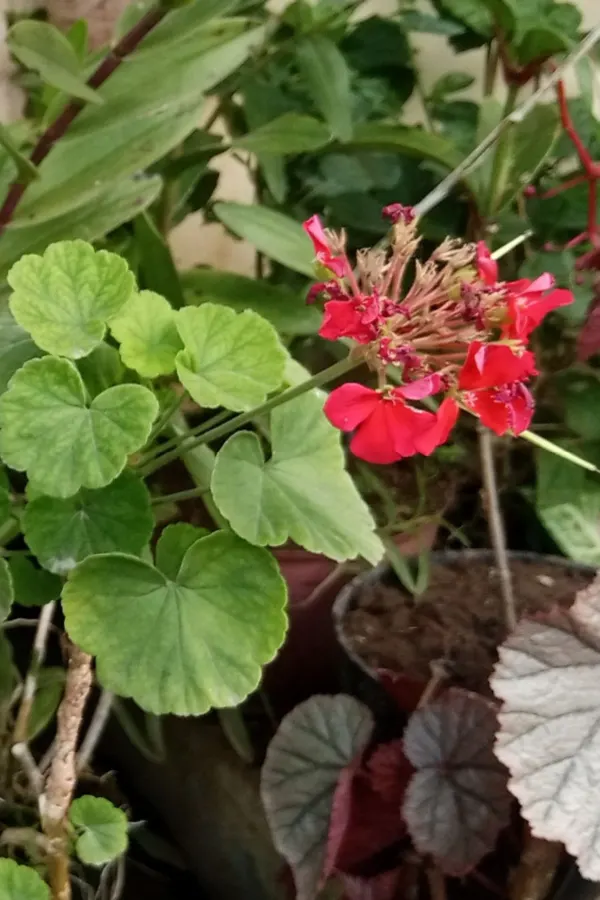Looking for the best way to fertilize your geraniums this year to keep them blooming big and strong all summer long?
As popular as geraniums are – they can also be a source of frustration for quite a few gardeners. Especially when it comes to keeping them healthy, green and flowering strong for an entire growing season.
All too often, geraniums that were full of blooms in May fade into a flowerless mass of weak foliage by early to mid summer. Is it a lack of water? Perhaps not enough sunlight? Could it be that pests are the culprit?

As it turns out, although proper light and water play a major factor in the bloom production of geraniums, more often than not, the flowering annual struggles to bloom due to a lack of nutrients. And that is exactly where fertilizing them correctly can pay off big!
The Best Way To Fertilize Your Geraniums
As an annual, geraniums need a steady supply of nutrients to power bloom sets on a continual basis. When first planted, there are usually enough nutrients in the soil for strong growth. But as the season progresses and the geraniums begin to grow larger, those resources can begin to disappear quickly from the soil.
This can be especially true when geraniums are growing in pots or containers where there is a limited amount of soil. Even when planted in the most fertile of potting soils, geraniums will eventually use up the available nutrients. And when they do, it becomes more and more difficult for them to bloom.
What Geraniums Need To Flower
Most fertilizers consist of three major nutrients – nitrogen, phosphorus and potassium. And each of the “Big Three” has an equally important role to play in a geranium’s overall health and growth. Nitrogen helps spur growth. Phosphorus aids in cell development and bloom production and potassium helps with water balance and health.

For geraniums, the biggest key is to not give them an overabundance of nitrogen. Nitrogen is an important nutrient for plants, but it helps more with overall growth than blooms.
With geraniums, nitrogen works to help the plant to grow larger and produce deep green foliage. It can certainly make the plant look incredibly healthy, but when it gets too much nitrogen, it will simply try to only grow larger – and at the expense of forming new blooms.
Instead, it’s far more important to fertilize geraniums with a power source that contains an equal balance of nitrogen, phosphorus and potassium. By giving all three in equal amounts, the plant will respond with good growth, good health – and yes, more blooms than ever!
The phosphorus will help by generating more blossoms – and the potassium will aid greatly in water management. Meanwhile, the equal serving of nitrogen will help keep the plant growing strong, but without too much power.
The Best Way To Fertilize Geraniums – Using A Water Soluble Fertilizer
In addition to selecting a power source that is balanced, the second key to success when fertilizing geraniums is to make sure your fertilizer is water soluble.

Although granular fertilizers will slowly work into the roots of plants, liquid fertilizing can work both through the roots of plants and by absorbing through the leaves. And even better, it can do it quickly! For geraniums, by simply giving them a dose of liquid energy every two weeks, you can all but ensure great blooming all season long.
For best results, use a balanced liquid fertilizer in the 10-10-10 to 15-15-15 range for its N-P-K makeup. This will provide the perfect balance of power without overpowering your plants Affiliate Link: Geranium Fertilizer by EZ-GRO | 15-15-15 is a Plant Food for All Geranium Plants
The final key is consistency! Make sure to give your geraniums that dose of power every two weeks. Allowing too much time between feedings can really hurt when it comes to powering new buds and bloom sets on a consistent basis.
Caring For Geraniums Beyond Fertilizing
When it comes to keeping your geraniums flush with new blooms, in addition to giving them a strong and steady source of power, there are a couple of additional tips that can go a long way towards success – the first of which is deadheading.
Allowing the old flower heads to remain on your plants will impact future blooms. And not in a positive way! Decaying flowers and stems on geraniums drain power from the plant. And as long as they remain, your geranium will continue to expend resources on trying to fix them.

By simply cutting back old blooms, you can stop the flow of wasted nutrients and redirect the plant’s efforts towards creating and opening new blooms.
It is important when deadheading to remove more than just the flower petals. With geraniums, be sure to cut the stem back as well all the way to its base. This will go below the canopy of foliage. Not only will it keep your plant looking neat and tidy, but it will stop the entire amount of energy being wasted on the old bloom.
Don’t Overwater
When it comes to geraniums, overwatering is almost always a bigger issue than underwatering. When they get too much water, the leaves of geranium plants will begin to yellow. Unfortunately, many gardeners take this as a sign that the plant must need more water and compound the problem even more.
When geraniums become waterlogged, their roots swell. When this happens, they cannot take in nutrients or moisture. And without energy, the plant will slow or even completely stop attempting to create new blooms.
Only water your geraniums when the soil dries down a few inches in the soil. If you have an inexpensive soil meter, anything more than a 25% moisture reading means you should hold off on watering. In addition, it is more important to water deeply than more often. Affiliate Link: XLUX Long Probe Deep Use Soil Moisture Meter
This will allows roots to go deeper in the soil as opposed to staying at the surface where they are more vulnerable. And remember, geraniums are actually a perennial and can be saved indoors over winter! For more on that, see: How To Save Potted Geraniums Indoors – 2 Easy Ways To Keep Geraniums Alive Over Winter!
Here is to fertilizing your geraniums for success – and to more blooms than ever this year!

This Is My Garden
Follow Our Facebook Page For Great Gardening Tips And Advice! This Is My Garden Facebook Page
This Is My Garden is a garden website created by gardeners, for gardeners. Jim and Mary Competti have been writing gardening, DIY and recipe articles and books and speaking for over 15 years from their 46 acre Ohio farm. They publish three articles every week, 52 weeks a year. Sign up today to follow via email, or follow along!
